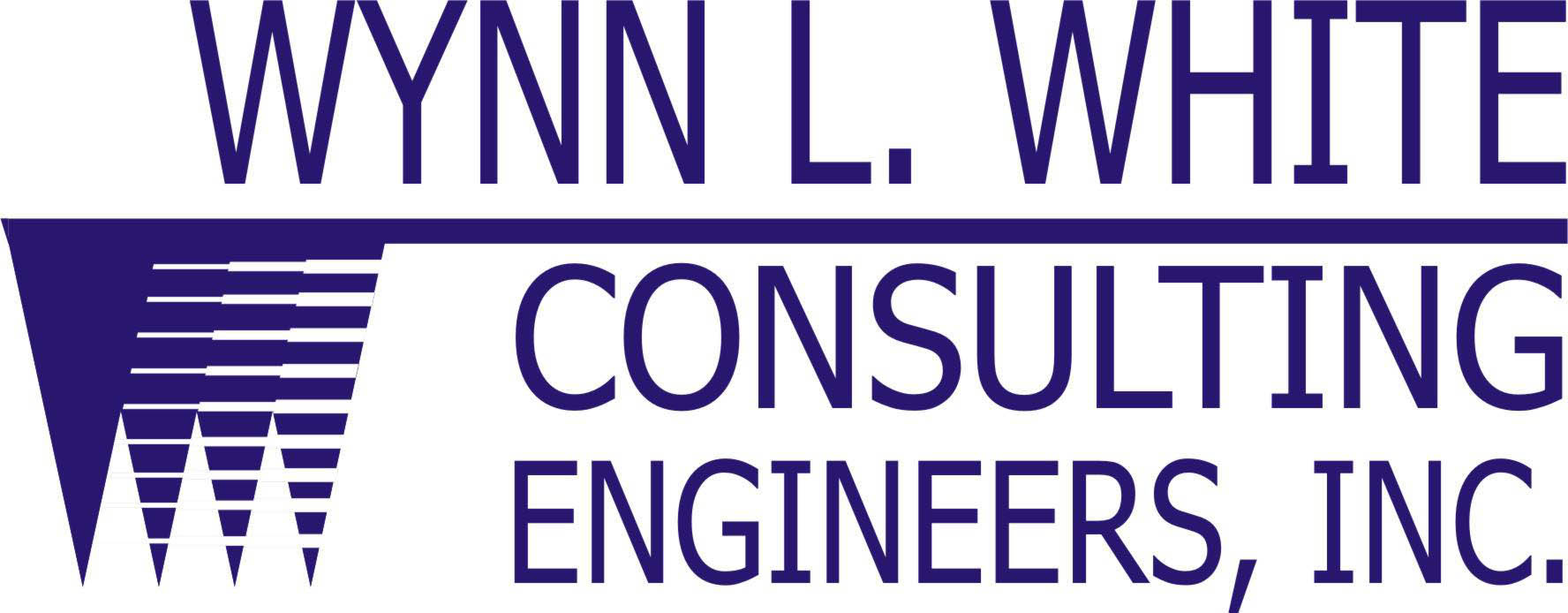Not All School Asbestos Floor Tile Removal Projects Are the Same?
Note: This post covers my experience on a school asbestos project in Louisiana. Interpretations of asbestos regulations and requirements vary by state, and even across different regions of my home state. My perspective on this was shaped by my introduction to asbestos abatement over 25 years ago, when asbestos floor tile removal was treated in virtually the same manner as abatement of friable materials. I’ve seen enough air sampling data from floor tile/mastic removal over the years to know it’s possible (and sometimes likely) for airborne asbestos concentrations to exceed EPA clearance levels for schools. So if I seem a bit overcautious when it comes to removal of asbestos floor tile/mastic, you’ll know why.
About two years ago, we were called to audit an asbestos abatement project already underway at a Louisiana school. The school system’s risk manager had visited the site, talked to the abatement contractor, and come away with a less than comfortable feeling – despite not knowing much about asbestos abatement projects.
I visited the site the next day, and what I saw blew my mind. The project involved removal of the 9″ asbestos floor tile/mastic from the school’s cafeteria. The good news was the contractor had the work area under negative pressure (I think), but there were several problems with the contractor’s performance of the work, and with the air monitoring that was being done (or not) on the project.
Here are some things I noticed:
-
air monitoring firm employed directly by the abatement contractor (potential conflict of interest)
-
inadequate asbestos abatement work area containment
-
no asbestos abatement plans and specifications onsite
-
no Asbestos Disposal Verification Form (ADVF) onsite
-
workers not wearing respirators inside the abatement work area
-
inadequate work area signs/barrier tape (OSHA and EPA signs & danger tape)
-
inadequate worker decontamination facilities (how can workers shower when there’s no water run to the decon’s shower unit?)
-
improper bagging of asbestos containing material (ACM)
-
dumpster containing construction debris and ACM
-
inadequate air monitoring/contractor observation
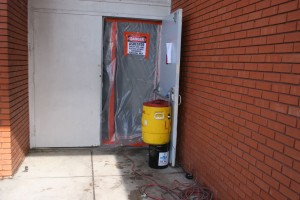
entrance to work area – not a 3 chamber decontamination unit
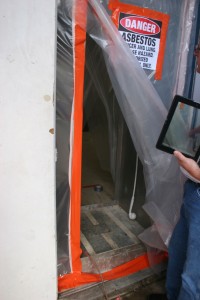
from outside, you could go straight into the shower. problem- the shower didn’t work
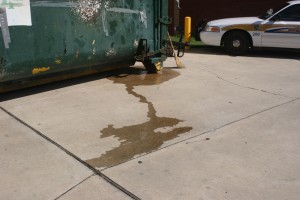
water leaking from asbestos dumpster
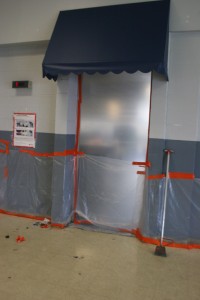
notice how the abatement work area isn’t sealed off from other building areas
The asbestos abatement contractor was allowed to hire the asbestos air monitoring consultant. That’s typically not done on asbestos abatement projects here in Louisiana. The person conducting air monitoring was untrained and non-accredited, and used improper air sampling practices. The person was an off duty cop who drove his police car to the site, no less!
So I sent my report, and waited to hear from the client. DEQ visited the site and found nothing alarming. But that’s a problem – this approach wouldn’t play in other regions of the state, since DEQ requirements vary by region here in Louisiana. But how are contractors and consultants to know what to do when the rules change depending on region?
During discussions of the abatement methods, the asbestos abatement contractor argued that his removal method didn’t cause the floor tile/mastic to become regulated, since he wasn’t “cutting” the floor tile. In this particular instance, the floor tile was significantly damaged by hand tool use.
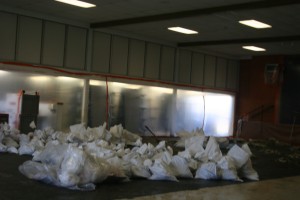
bags not labeled or goosenecked
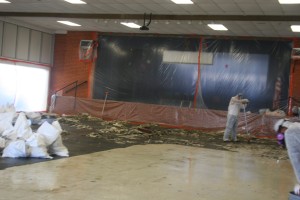
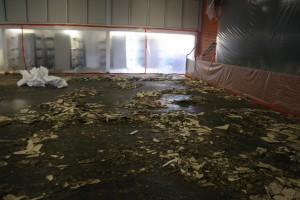
removal that damaged floor tile like this can fail EPA clearance tests
I think too many are playing with words due to the definition of “cutting” and other terms in the regulations.
There are many who believe that manual removal of floor tile/mastic cannot result in making the floor tile/mastic regulated. That goes for school systems as well as contractors, so there are many projects of this type. I strongly disagree with this approach, and I believe using a hand tool to strike and break (in this case into many pieces) ACM will result in the ACM becoming regulated. I also believe there’s a good chance airborne asbestos fiber concentrations will exceed EPA clearance levels.
I spoke with OSHA about this project, and they agreed that this particular removal method would be considered “aggressive” as defined in 29 CFR 1926.1101 (OSHA’s Asbestos in Construction Standard), so employee decontamination, etc. would be required. They also agreed that the person conducting air monitoring would have to be trained and accredited.
I also believe that any school abatement project that is not small scale, short duration should require a project designer and proper disposal of asbestos waste.
So if you’re involved with a school abatement project, how do you avoid these potential violations?
I think you start with the following:
-
use accredited personnel for all phases of the work
-
use an accredited asbestos abatement project designer (and one who’s also a registered professional engineer or registered architect)
-
have the abatement contractor and asbestos air monitoring firm perform the work under separate contracts
-
ask about clearance sampling and procedure, as well as analysis
If you’re uncertain about whether or not your abatement project complies with the regulations, involve DEQ (and if necessary, OSHA) to make sure you’re covered. Asbestos floor tile removal may seem to fall into a gray area, depending on the advice you’re getting. Make sure you’re not taking unnecessary risks.
If you need help getting your asbestos abatement projects going (or help checking to make sure you’re in good shape), please call or email me. Or are you handling your projects differently than I’d suggest, and would like to give me your opinion? Please let me know.
Stay in compliance, my friends.
